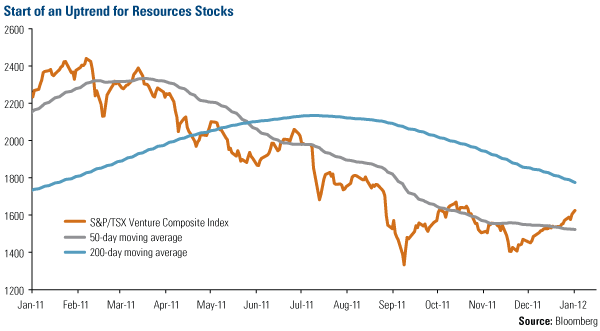Energy and Natural Resources Market Radar (January 30, 2012)


Strengths
- Industrial metals rallied strongly this week bolstered by positive economic data in the U.S., dovish language from the Federal Reserve and likely short-covering. Copper finished up almost 4 percent at $3.89 per pound, making this the third consecutive week of gains.
- J.P. Morgan reported that China has now surpassed Japan as the world’s largest coal importer after importing 183.2 million tons in 2011, up 10 percent on a year-over-year (yoy) basis. Comparatively, Japan’s total imports for 2011 came in at 175.2 million tons, down 5 percent (yoy). The drop in Japanese imports could partially be attributable to the earthquake and tsunami in the first half of 2011.
- Deutsche Bank highlighted that commodities rallied across the board after the Federal Reserve signaled that a rate hike was nowhere in sight. The Federal Reserve’s statement that conditions are likely to warrant exceptionally low levels for the funds rate “at least through late 2014” is on the surface a major difference from the “at least mid-2013” date given in the last statement.
- U.S. natural gas prices have also rallied off a bottom near $2.32 million British thermal units (mmbtu) to break through a technical ceiling. Traders drove a sharp move higher on Wednesday.
- Grain prices recovered this week on supply concerns due to dry conditions in Argentina. Corn gained 5 percent and wheat gained 6 percent this week.
Weaknesses
- Australian oil producers shuttered as much as one-quarter of the country’s output as Tropical Cyclone Iggy was forecast to strengthen.
- India Coal Market Watch said that India’s coal production fell 2.7 percent since April 1, 2011. The group said that output was 359.8 million tons from April to December compared with 369.8 million tons the previous year. Production was 8 percent less than the government’s target of 391.48 million tons. India’s coal production was 533 million tons in the year ended March 2011, below the government target of 573 million tons.
- South Africa has become significantly less attractive as a mining investment destination since 2006, the South African Institute of Race Relations (SAIRR) said this week. "Uncertainty over nationalization and mine ownership, and increasing work disruptions are affecting investors' willingness to get involved in mining ventures in South Africa," SAIRR researcher Jonathan Snyman said in a statement.
Opportunities
- Copper stockpiles at the London Metal Exchange fell for the 16th week, declining 2.3 percent to 348,750 tons. This is the lowest level since December 2012 and could be another driver for stronger copper prices as stockpiles get replenished.
- Barclays Capital reported that global manufacturing data and business confidence seem to suggest that industrial production and sentiment have started to stabilize. On a monthly basis the Barclays aggregate global manufacturing PMI data recorded its strongest improvement since January 2011, advancing from -0.71 in November to 0.5. Further, that improvement was widespread, spanning the U.S., U.K., Brazil, Asia and even in the Europe. In fact, Flash PMI for the eurozone moved above 50 for the first time since August 2011.
- Barclays cited a news report that the current size of the cattle herd in the U.S. may be the smallest since Dwight Eisenhower was President in 1958. A Bloomberg News survey said ranchers held 91.24 million head of cattle as of January 1, down 1.5 percent from a year earlier. A record drought in Texas last year and rising feed costs prompted ranchers to cull herds, even as beef exports from the U.S. surged. Cattle futures are up 15 percent since the end of June. After reaching an all-time high on an annual basis in 2011, the Livestock Marketing Information Center says retail-beef prices will keep rising through next year.
Threats
- GMP reported that an oil pipeline in United Arab Emirates that would strategically bypass the Strait of Hormuz to the tune of 1.5 million barrels per day could face more delays due to differences with a Chinese construction company.
- Gains that made natural gas the best-performing commodity this week may soon be evaporating as traders bet U.S. production cuts won’t be enough to reduce the biggest supply surplus since 2009. Resource Daily commented that futures soared as much as 20 percent from a 10-year low in New York after Chesapeake Energy Corp. and ConocoPhillips said they’ll reduce output. Energy producers are shifting spending to basins that yield more lucrative oil and gas liquids, in addition to producing natural gas. Gas has tumbled 14 percent this year as a boom in U.S. shale output pushes inventories toward record levels. Stockpiles were 21.4 percent above the five-year average last week, the most since June 19, 2009. Data from the U.S. Department of Energy shows production grew by an all-time high of 4.5 billion cubic feet a day in 2011, while demand rose 920 million cubic feet.












